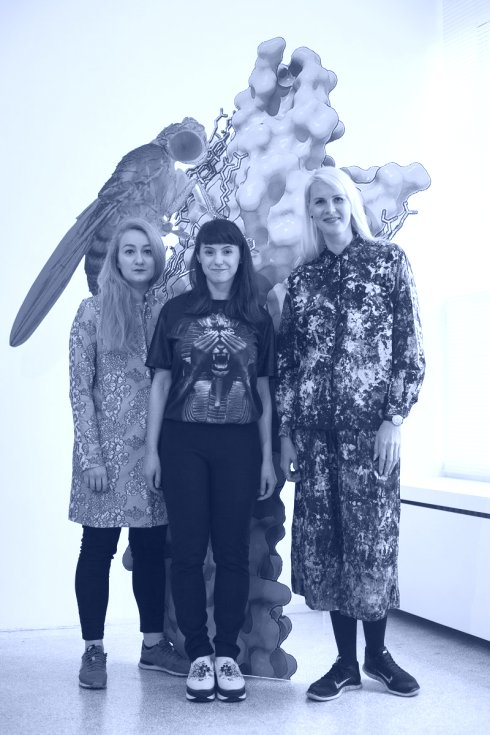The Estonian Pavilion was visited by almost 40 000 people
The 57th International Art Exhibition – la biennale di Venezia was closed on November 26, 2017. During six months, The Estonian Pavilion was visited by almost 40 000 people that is the biggest number of visitors in 20 years Estonia has been participating at the biennial.
This year, Estonia was represented by Katja Novitskova’s exhibition If Only You Could See What I’ve Seen with Your Eyes, curated by Kati Ilves.
The following day, November 27, Katja Novitskova was awarded with the Young Cultural Figure Award, presented by the President of Estonia, Kersti Kaljulaid.
Katja Novitskova (b 1984, Estonia) currently lives and Works in Berlin. If Only You Could See What I’ve Seen with Your Eyes addressed the relationship between the domain of seeing, big data-driven industries, and ecology in times of biotic crisis. In her work Novitskova examines ecological and information systems, through an engagement with digital images on the web. In 2011, she published the influential artist book, Post Internet Survival Guide, that became one of the core works of post-internet movement. Besides the Estonian Pavilion, Katja Novitskova has had in 2017 solo shows at New York City Hall Park and Cs Foundation and Art Centre, Shanghai. Her works are part of Helsinki museum Kiasma’s show ARS’17. On February 22, 2018, Katja Novitskova will open a solo show at Kumu art museum, Tallinn that is an extended version of the show in Venice.
Katja Novitskova’s show got the attraction of international as well as the local press. The show was called a must-see by Huffington Post, AQNB, Elephantmag, Cura, Artefuse, and others. John Holten, an art critic at Momus, wrote: The pavilion feels like a dream of a near-future in which machines have taken over our parental urge to preserve and steward the natural world. Another projected fragment, however, seems to remind us that the oneiric is not the exhibition’s aim. Rather it is our ability to see contemporary reality in its daylight truth: a carefully managed, commodified, automated terra incognita.
Graphic design for the exhibition was made by Ott Metusala. The catalogue was published in cooperation with Sternberg Press. The exhibition guides programme was a cooperation between the universities and Erasmus+ programme. The main sponsor was Estonian Ministry of Culture. Estonian Pavilion was supported by Katja Novitskova’s galleries Kraupa-Tuskany Zeidler and Greene Naftali, as well as Cobalt Legal, DSV Transport and Estonian Embassy in Berlin.
Center for Contemporary Arts, Estonia is the producer of Estonian Pavilion at the Venice biennial since 1999.
